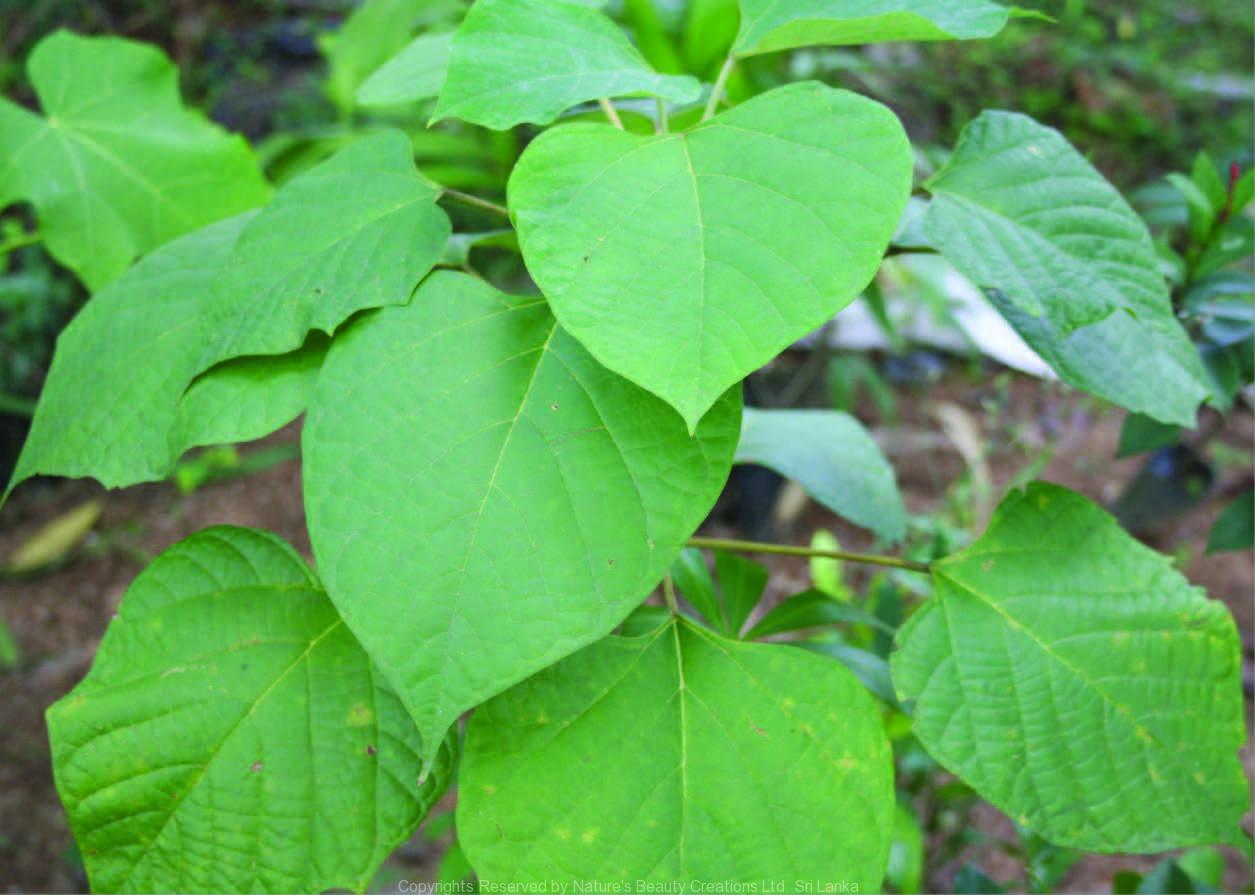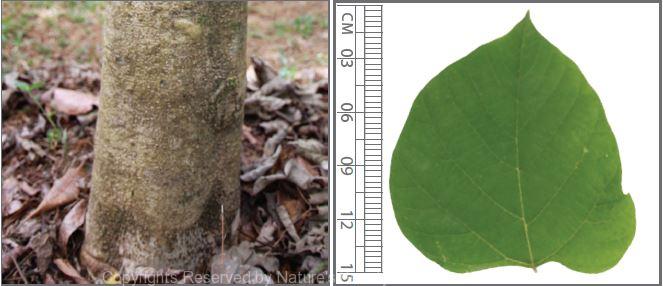

Traditional Knowledge
Useful plant parts :
Root, bark and leaf
Uses in traditional medicine :
- Root decoction mixed with 2 cups of boiled cow’s milk is taken with pure kithul juggery to increase the milk secretion in mothers
- Used to remove foetid discharges and worms caused due to ulcers
- Given for fever and thirst
Scientific Research
Chemical constituents:
Iridoid glyosides: gmelinosides A–L, isoxazole alkaloid: premnazole from leaves; apiose containing coumarin glycoside: apiosylskimmin from roots; lignans: gummadiol, isoarboreol derivatives, hydroxysesamin derivatives, arborne, dihydrogmelinol derivatives, arboreol, gmelanone from heartwood; flavonoids: apigenin, luteolin, quercetin and hentriacontanol, β-sitosterol from plant
Bioactivity :
Alcohol, hexane, aqueous extracts of leaves: anthelmintic, antioxidative, vasovelaxant; bark and fruit extracts: alleviate oxidative stress induced liver damage; premnazole: anti-inflammatory; methanol extract of the plant: immunostimulant
Clinical:
Note :
An ingredient of ayurvedc preparation known as “Dashamularishta”
References : Ambujakshi, H. R. and Heena, T., (2009), Anthelmintic activity of Gmelina arborea roxb. leaves extract, International Journal of Pharma- ceutical Research and Development, 1(9), 1. Anjaneyulu, A. S. R. et al., (1975), The structure of gummadiol – A lignan hemi-acetal, Tetrahedron Letters, 16(22-23), 1803-1806. Anjaneyulu, A. S. R. et al., (1975), The isolation and structure of 6”-bromo-isoarboreol – the first bromine containing lignan, Tetrahedron Letters, 16(52), 4697-4700. Banu, M. et al., (2013), An overview on phytochemistry and pharmaco- logical properties of Gmelina arborea, Journal of natual productresource, 3(4), 62-71. Barik, B. R. et al., (1976), Premnazole, an isoxazole alkaloid of Premna integrifolia L. and Gmelina arborea L. with anti-inflammatory activity, Fitoterapia, 639(4), 395. Falah, S. et al., (2008), Chemical constituents from Gmelina arborea bark and their antioxidant activity, Journal of Wood Science, 54(6), 483-489. Hosny, M. and John P. N., (1998), Gmelinosides A−L, Twelve Acylated Iridoid Glycosides from Gmelina arborea, J Nat Prod, 61(6), 734-742. Jabbar, S. et al., (2004), Bioactivity studies of the individual ingredients of the Dashamularishta, Pak J Pharm Sci, 17(1), 9-17. Malhotra, S. and Singh, A. P., (2007), A Review of Pharmacology of Phytochemicals from Indian Medicinal Plants, The Internet Journal of Alternative Medicine, 5(1), 1. Satyanarayana, P. et al., (1985), An apiose-contaning coumarin glycoside from Gmelina arborea root, Phytochemistry, 24(8), 1862-1863. Shukla, S. H. et al., (2010), Modulating effect of Gmelina arborea Linn. on immunosuppressed albino rats, Pharmacognosy Res, 2(6), 359-63. Wansi, S. L. et al., (2012), In vivo antioxidant and vasodilating activities of Gmelina arborea (Verberaceae) leaves hexane extract, J Complement Integr Med, 9. Sinha, S. et al., (2006), Bark and Fruit Extracts of Gmelina arborea. Protect Liver Cells from Oxidative Stress, Pharmaceutical Biology, 44(4), 237-243.
Copyrights Reserved By
Natures Beauty Creations



